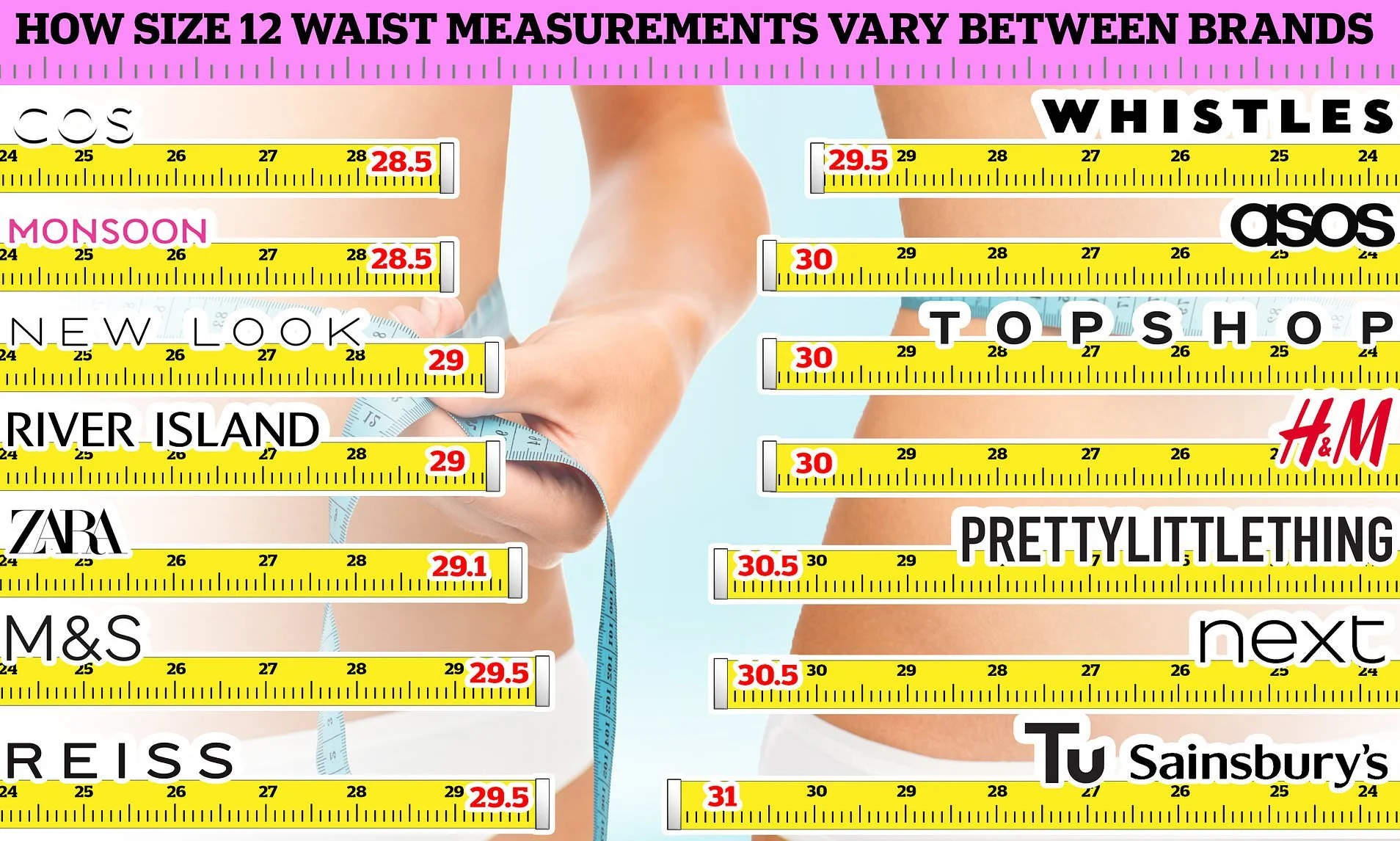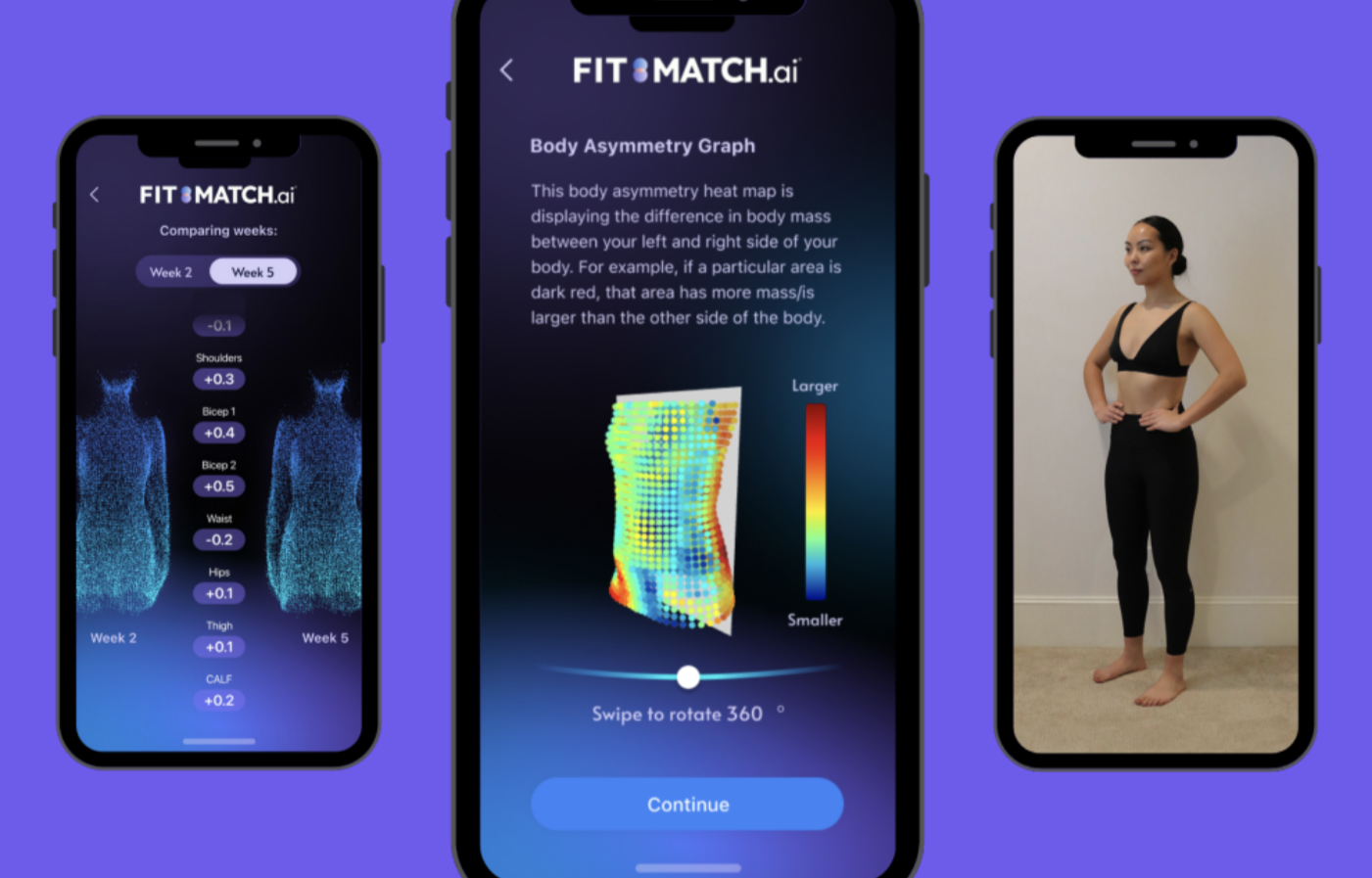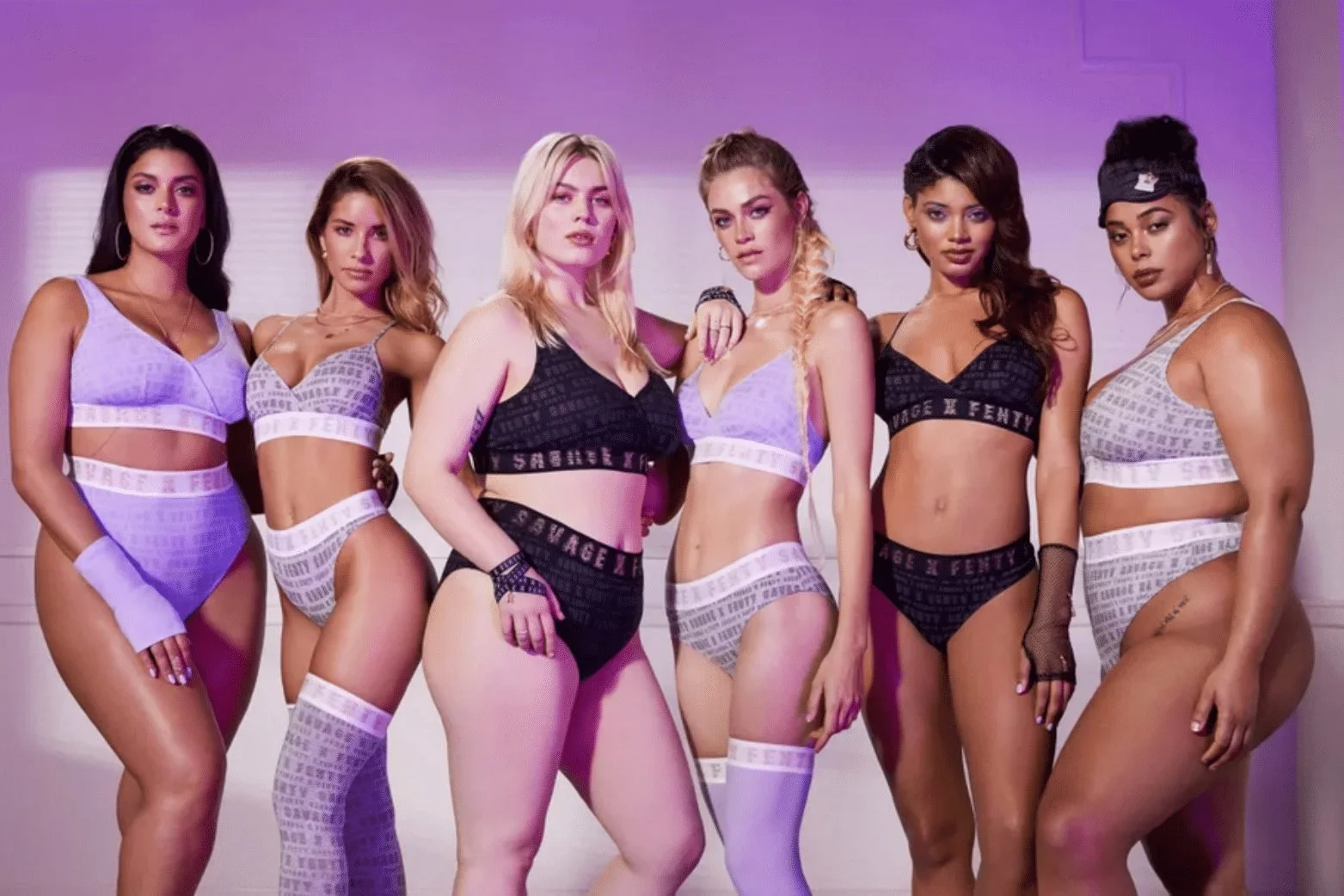When Size Lies: The Truth About Vanity Sizing in Fashion
What Is Vanity Sizing?
Imagine picking up a shirt that says “Size 6” and it fits you perfectly. Then you walk into another store, grab a “Size 6,” and it hangs off your shoulders like it’s two sizes too big. That confusion is what shoppers everywhere experience every single day.
This strange, frustrating, and often emotional phenomenon is called vanity sizing. Vanity sizing means a clothing brand uses smaller size labels even though the clothes are actually larger. It’s a quiet marketing trick that makes people feel good because they can wear a smaller number, but it doesn’t always match what’s real for their body (Fytted, 2024).
So while you might smile seeing a smaller tag, the number doesn’t always reflect your true shape or measurements.
In this post, we’ll look at:
What vanity sizing really means
How it started and why brands do it
The way it affects shoppers’ confidence
How inclusivity and technology are reshaping fit
And how fashion can move toward honesty again
A Short History of Sizing in Fashion
Back when clothes were first mass produced, sizing actually made sense. Garments were measured by inches, centimeters, or direct fit. A dress that had a 32-inch bust was labeled as such. But over time, both body shapes and brand strategies evolved.
In the early 1900s, the U.S. government tried to standardize sizing for women by taking measurements from thousands of women, but most of those women were white, young, and thin (Wikipedia, 2023). Those narrow data points became the foundation for decades of clothing design.
As women’s bodies diversified and manufacturing expanded globally, brands started quietly inflating their clothes’ dimensions while shrinking the number on the label. The same body measurements suddenly fell into smaller sizes (blog.boldmetrics.com, 2023).
By 1937, a size 14 dress had a 32-inch bust. By 1967, that exact measurement was labeled as a size 8 (Wikipedia, 2023). The meaning of “size” had literally shrunk.
Because there’s still no universal sizing standard, what’s a medium or an 8 in one brand could fit like a 10 or 12 in another (PMC, 2015). This inconsistency makes shopping less about fit and more about guessing, or worse, comparing yourself to numbers that were never meant to tell the truth.
How Vanity Sizing Works (And Why Brands Do It)
Vanity sizing isn’t random. It’s a deliberate strategy that uses psychology to sell clothing. Brands label garments with smaller numbers than their true dimensions; so a dress that should be labeled a 10 might instead read an 8 (Fytted, 2024).
Why do they do this?
Emotional marketing. People like seeing a smaller number on their tag, it feels rewarding (Forbes, 2013).
Boosted self esteem. Smaller size numbers can make shoppers feel more confident, so they’re more likely to buy (Kinley, 2010).
Competitive pressure. If one brand’s 8 fits like another brand’s 10, everyone races to appear “smaller.”
A study from the Journal of Consumer Psychology showed that smaller labels create positive self imagery for shoppers even when they know vanity sizing exists (Aydinoğlu & Krishna, 2010). But when that illusion breaks, when someone realizes their usual size suddenly feels too small, it causes frustration, embarrassment, and even guilt (ScienceDirect, 2013).
So the same system that’s meant to make people happy can also make them feel inadequate.
The Impact on Shoppers: Confidence, Confusion, and Comparison
Vanity sizing has become more than a retail tactic, it’s a cultural habit. It can change how we see ourselves in subtle but powerful ways.
Confidence boost: When someone fits into a smaller size, they feel good. That emotional lift is one reason brands use vanity sizing (SSRN, 2010). It’s the fashion equivalent of getting a compliment.
Confusion: Because sizes aren’t standardized, a person can wear a 6 at one store, a 10 at another, and a 12 somewhere else, all while their body stays exactly the same (PMC, 2015).
Body image and self esteem: In a Family and Consumer Sciences Research Journal study, women who tried on smaller labeled garments reported feeling more attractive, while larger labeled clothes had the opposite effect (Kinley, 2010). The number on the tag shouldn’t matter, yet it often dictates how we feel about ourselves.
Trust issues: When shoppers can’t predict fit, they lose faith in the brand. If every purchase becomes a guessing game, customers shop elsewhere or just give up.
Representation problems: Vanity sizing often centers on idealized bodies. Plus size and mid size shoppers are left out when brands compress or erase size ranges to appear more “slim fit friendly” (News, 2021).
Online shopping trouble: With e-commerce booming, sizing inconsistency leads to costly returns. Each mislabeled garment wastes packaging, money, and energy (blog.boldmetrics.com, 2023).
In short: vanity sizing sells confidence, but it steals trust.
Brands and Retailers Tackling the Problem
While vanity sizing remains widespread, a new generation of brands is rewriting the rules of fit.
1. Inclusive ranges – Brands like Good American and Universal Standard create jeans, dresses, and basics that cover every shape from 00 to 40. Their goal isn’t to flatter; it’s to fit.
2. Honest size charts – Retailers now list real measurements: bust, waist, and hip, alongside tag numbers so shoppers can make informed choices.
3. Fit technology – Companies like Fit:Match use body scans and algorithms to predict accurate sizing, while tools like BoldMetrics let customers create 3D avatars for online try ons (blog.boldmetrics.com, 2023).
4. Consumer education – Some brands now teach customers that “size is just a number.” Fashion educators and influencers emphasize that how you feel in the outfit matters more than what the tag says.
5. Standardization efforts – Industry researchers continue to advocate for an international sizing code that would restore trust between shoppers and manufacturers.
Step by step, fashion is rediscovering what fit really means: clothes that work for people, not numbers.
Technology Changing the Game
Technology is transforming how we shop and what “fit” means in the digital age.
Virtual try on systems now let customers upload photos or body measurements to preview how garments will drape on their shape (arXiv, 2024). These tools even adapt to size variations, simulating how different materials stretch or shrink.
Behind the scenes, huge databases of body measurement data help brands design more accurate size charts. Artificial intelligence and 3D modeling predict how a fabric moves across real bodies instead of mannequins.
By using tech, brands can focus less on vanity numbers and more on realistic proportions. This shift doesn’t just improve confidence; it reduces waste from returns, making online shopping more sustainable and far less stressful.
Inclusivity and Real Representation
Vanity sizing promotes a false idea: that smaller = better. This mindset fuels beauty standards that exclude millions (Nylon, 2023).
True inclusivity means more than extended size ranges. It involves designing for real proportions, considering busts, hips, torsos, and heights across body types. When fashion includes everyone, it stops being about shrinking bodies and starts being about celebrating them.
Still, some retailers show only a narrow set of models, sending the message that certain shapes “belong” more in fashion. Shoppers notice. When plus size or mid size customers can’t find their fit, or when every size chart feels inconsistent, it sends a painful signal that their bodies weren’t part of the plan (Vogue Business, 2023).
Brands that truly care about representation can start small:
Be transparent about measurements.
Show clothes on varied body types.
Offer ranges that reflect actual customers, not stereotypes.
Representation isn’t a marketing trend, it’s the future of belonging in fashion.
The Future of Sizing: Comfort Over Numbers
The goal for the next era of fashion is simple: comfort over numbers. The number on the tag should matter less than how the garment fits and feels.
Standardization could help, if major brands agreed on a shared chart for measurements, shoppers would finally know what to expect. FitAnalytics and Sizer are pushing for exactly that (FitAnalytics, 2018).
But standardization alone won’t solve everything. Brands must design from real data and real diversity, not from outdated models of a “perfect body.” Future fashion could use:
Fit-first design: building patterns around multiple body shapes instead of scaling one “base size.”
Personalized sizing: using phone scans or virtual avatars to suggest your perfect fit automatically.
Mindset shift: helping consumers unlearn the idea that clothing size equals self worth.
As e-commerce continues to grow, the brands that embrace this change, and focus on honest, personalized fit, will win not just sales but loyalty. The future promises less deception, less confusion, and a lot more confidence.
Why Real Fit Matters More Than Labels
When you step into a fitting room or fill your online cart, all you really want is for your clothes to fit, feel good, and look right. The tag number is only fabric ink, it should never define you.
Because of vanity sizing, shopping has become a guessing game. We’ve learned to attach pride or shame to numbers that don’t mean anything. Brands might profit in the short term, but they lose something bigger: trust.
The good news? A new wave of inclusivity, transparency, and technology is breaking through the illusion. Shoppers are smarter, louder, and ready for change.
In the end, fashion isn’t about fitting into a number. It’s about clothes fitting you.
References
Aydinoğlu, N., & Krishna, A. (2010). Imagining thin: Why vanity sizing works. Journal of Consumer Psychology, 20(4), 508–513. https://doi.org/10.1016/j.jcps.2010.06.002
Fytted. (2024). What is vanity sizing? The truth about clothing size inflation. https://fytted.com/blog/what-is-vanity-sizing
Kinley, T. R. (2010). The effect of clothing size on self-esteem and body image. Family and Consumer Sciences Research Journal, 38(3), 317–332. https://doi.org/10.1111/j.1552-3934.2009.00027.x
Lovejoy, J. (2017). Economics of vanity sizing. Journal of Economic Behavior & Organization, 134, 336–355. https://ideas.repec.org/a/eee/jeborg/v134y2017icp336-355.html
Müller, L., & Neumayer, R. (2013). The flip side of vanity sizing: How consumers respond to and compensate for size labels. Journal of Consumer Psychology. Arizona State University.
National Center for Biotechnology Information (NCBI). (2015). Size and how you measure it matters. PMC. https://www.ncbi.nlm.nih.gov/articles/PMC4493877/
News Illinois State University. (2021, October). Vanity sizing and how it impacts women’s body-image confidence. https://news.illinoisstate.edu/2021/10/vanity-sizing-and-how-it-impacts-womens-body-image-confidence/
Sizer Blog. (2022). The myth of standardised clothing size – why clothes don’t fit. https://sizer.me/blog/vanity-sizing/
FitAnalytics Blog. (2018). Vanity sizing and size charts: A brief history. https://fitanalytics.com/blog/history-of-vanity-sizing-and-size-charts
Wikipedia. (2023). U.S. standard clothing size. https://en.wikipedia.org/wiki/U.S._standard_clothing_size
BoldMetrics Blog. (2023). From vanity sizing to true size inclusivity: Solving online fit.https://blog.boldmetrics.com/from-vanity-sizing-to-true-size-inclusivity-solving-online-fit
Vogue Business. (2023). Sizing is stopping consumers from shopping – Here’s what brands need to know.https://www.voguebusiness.com/story/fashion/sizing-is-stopping-consumers-from-shopping-heres-what-brands-need-to-know
Nylon. (2023). Our obsession with size and why it’s hurting fashion. https://www.nylon.com/articles/obsession-with-size
Forbes. (2013). The psychology behind vanity sizing. https://www.forbes.com/sites/rogerdooley/2013/07/29/vanity-sizing
arXiv. (2024). Virtual try-on models for realistic fashion fit. https://arxiv.org/abs/2408.02803
Image References
Athletech News. (2023, February 10). Fit:Match and the future of fitness: 3D body scanning tech [Screenshot]. https://athletechnews.com/fitmatch-future-of-fitness-3d-body-scanning-tech/
Daily Mail. (2021, January 15). How size 12 waist measurements vary between brands [Infographic]. In Does vanity sizing make it impossible to shop online? https://www.dailymail.co.uk/lifestyle/article-9138015/Does-vanity-sizing-make-impossible-shop-online.html
Fit Analytics. (n.d.). Fit Analytics logo [Graphic]. Retrieved from https://www.golangprojects.com/golang-go-job-cql-Golang-Developer-Berlin-Fit-Analytics-GmbH.html
Hedian, M. (2023, March 2). Savage X Fenty: How Rihanna built a body-positive brand through social media[Photograph]. Maria Hedian Blog. https://blog.mariahedian.com/savage-x-fenty-social-media/
iStock. (n.d.). Woman looking at her stomach in the mirror [Photograph]. Getty Images. https://www.istockphoto.com/photos/woman-looking-at-her-stomach-in-the-mirror
Renée, T. (2023, May 6). Dress up your happiness [Photograph]. Substack by Tina Renée.https://tinarenee.substack.com/p/dress-up-your-happiness
Website Files. (2022, December 8). A female shopper confused about sizing [Photograph]. https://cdn.prod.website-files.com/6286c9ef78f7d7ab3fad1d8d/6392ffe16a0b0a512c9e7361_a_female_shopper_confused_about_sizing.webp






